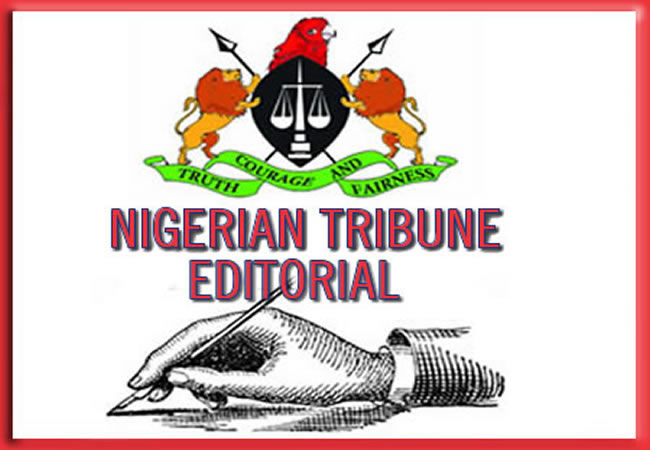THE death of Dr Vwaere Diaso in a lift is a great loss to her family, colleagues, Lagos State and Nigeria as a whole. It is not only unfortunate, it is unacceptable because it was clearly avoidable. The late Diaso was trapped in a lift for about an hour, shouting for help even while grievously injured. Her death provoked public outcry. Subsequently, the Lagos State government set up a panel that rapidly investigated the matter, eventually leading to the sack of the facility managers responsible for the care of the doctor’s quarters at General Hospital, Odan, Lagos Island, where the incident occurred.
It is appalling that it took the death of Dr Diaso for the Lagos State government to address the issue of lifts in public buildings. The lift had been in a state of disrepair for a long time, with public shows of concern expressed on social media. Concerned residents of the building had even posted the dangerous lift online through several tweets. Yet, none of the hospital authorities, facility managers and the Lagos State government responded to get the machine fixed. The eventual collapse of the lift therefore speaks graphically to the shameless incapacity and utter negligence with which public officials handle the affairs of the country. Taking the health and safety of citizens as a major concern of government is the exception rather than the rule.
From the report of the panel, it was not just that the hospital management failed to draw attention to the non-performance of the facility management company in charge of the lift; the Lagos State Infrastructure and Asset Management Agency (LASIAMA) that has the responsibility to oversee the job of the facility managers failed to do due diligence. Apparently, the hospital management was not in the operational line of reporting of the facility’s management. How do you get value for money when the users of a service have no say in the determination of performance? This shows the extent of disregard for service users by the government. It is a disgrace that such operational structure exists in Lagos State nearly two decades after the launch of the Service Compact with Nigerians (SERVICOM) by the Federal Government.
The Lagos State government has suspended the general manager of LASIAMA and blacklisted the facility managers that defaulted in the maintenance of the lift system. It should complete the investigation it said was still ongoing regarding the lift. As it claimed, the lift was brand new when it was bought in 2021 but collapsed barely three years later. When precisely did the lift go bad, and when did this get to the attention of the hospital management and LASIAMA? What was the existing channel of complaint? What is the punishment for default by the facility managers according to the law? These questions must be answered. Again, although Dr Diaso cannot be retrieved from the cold hands of death, damages must be paid to the family she left behind. The government has ordered an audit of all lifts in public offices, but why was safety arrangement not activated to prevent fatality in the Diaso case? Why did it take about an hour to get Dr Diaso out of the lift? What can be done to make the response time better? These are issues that need to be addressed before the closure of this very tragic case.
Public officials saddled with the safety and health of Nigerians often behave irresponsibly. This often manifests in reckless and inhumane treatment of clients, patients and facility users in general. This irresponsible behaviour also manifests in decisions relating to the procurement, supply and maintenance of equipment. During such decisions, greed and personal gain trump the factors of safety, quality and value for money. Nigerians can point to a long list of institutions where the government claimed to have invested billions of naira for renovation or rehabilitation without any change in the quality of the infrastructure and services provided. Some institutions declared as centres of excellence in certain segments of healthcare, with special budgetary provisions, remain anything but centres of excellence. Huge budgetary provisions are made annually without any visible consequences. No wonder then that after embezzling the money devoted to healthcare and other facilities, Nigerian public officials run abroad for treatment. Some of them purchase houses abroad like people who have no sense of ownership and commitment to their kith and kin whose life chances depend on government’s careful management of public resources. These cannot continue because they have dangerous consequences, like the lift incident.
The government should publish how much was devoted in the annual budgets to the maintenance of facilities like the quarters where the lift incident occurred. Nigerians need to know why, after such budgetary allocations, the facility was being used in its dangerous state. We think that the situation is tied to corruption. If a humongous sum of money budgeted for the maintenance of the machine had been corruptly mismanaged, would it not be administratively incongruent to stop the use of the dangerous contraption since that would clearly call attention to the corruption? In such circumstances, it would be convenient to allow its continuous use even if it was a disaster waiting to happen. Why did LASIAMA fail to do due diligence? It is not enough to suspend the general manager; there is a need for deep investigation beyond the quality of the lifts procured for government buildings. The government needs to find out if there was a case of regulatory capture. What could have accounted for the failure of the safety and emergency arrangements? Were the necessary equipment and provisions at a General Hospital to save life in an emergency available when Dr Diaso was eventually rescued from the wreckage of the collapsed lift and brought to the hospital? Was the mandatory provision of safety equipment in a public hospital for use in emergencies available or compromised?
These questions call for a general reform of the governance of the health system in Nigeria’s Centre of Excellence.






